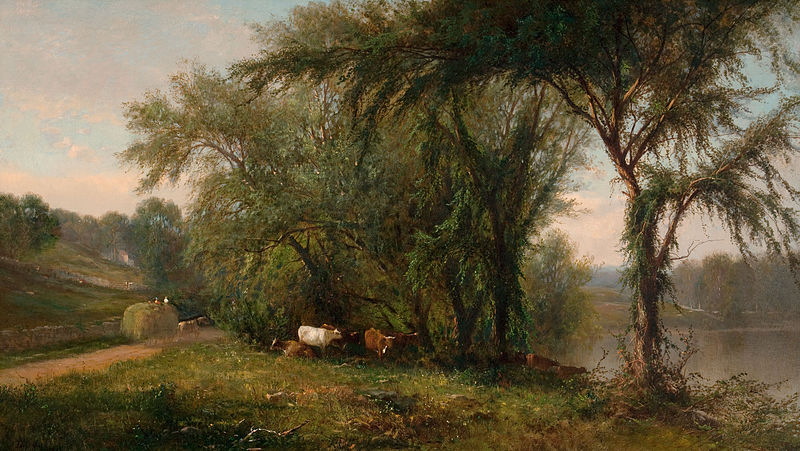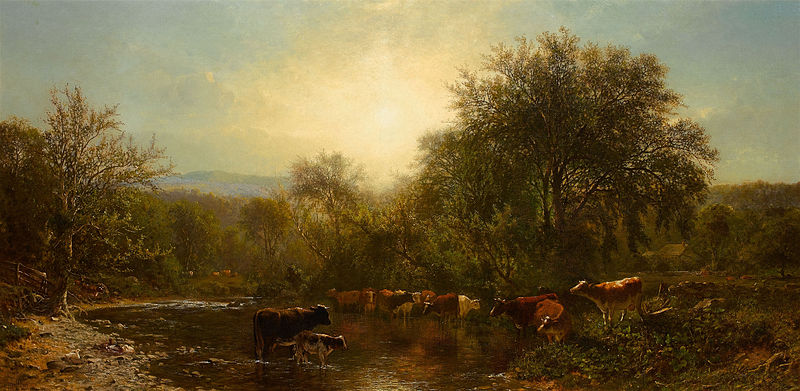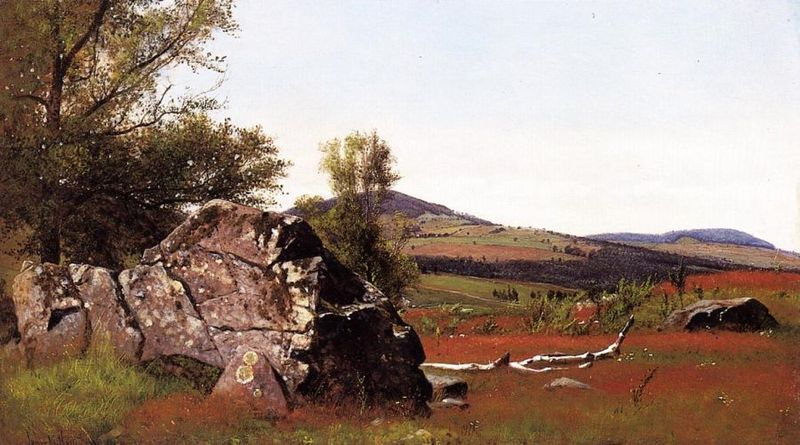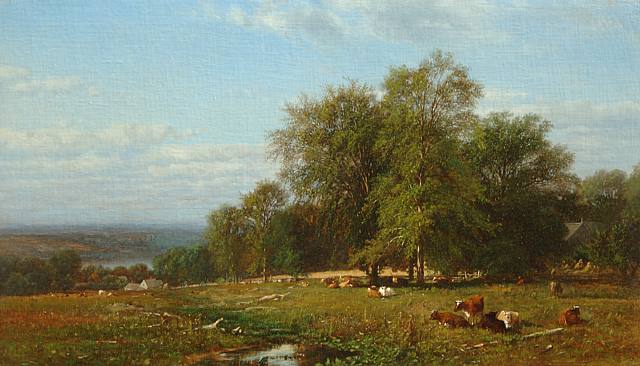<Back to Index>
- Painter Robert Seldon Duncanson, 1821
- Painter James McDougal Hart, 1828
PAGE SPONSOR
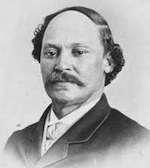
Robert Seldon Duncanson (1821 – December 21, 1872) was an African - American painter associated with the Hudson River School. He is often described incorrectly as Robert Scott Duncanson, the son of a Canadian of Scottish descent, but he was actually descended from freed Virginia slaves.
He was born in Seneca County, New York, in 1821. As a young boy, Duncanson lived with his father in Canada, while his mother lived in Mount Pleasant, Ohio, a village fifteen miles (24 km) north of Cincinnati. It was not until the summer of 1841 that Duncanson left Canada for Mount Pleasant. Upon his return to his mother’s home, Duncanson said, “I’ve come back to be an artist.” Yearning to do more with paint than use it on houses, as he had been doing since 1838 with his house painting and decorating venture, he moved to Cincinnati, which seemed to be the right place. Around this time period, Cincinnati was “known as the Athens of the West.” Although Duncanson possessed the drive and determination to be an artist, he received no technical training. Instead, “determined to break into the exclusively Caucasian art community [. . . he] taught himself art by painting portraits and copying prints.” Duncanson’s determination paid off with a long career that was active until his death in 1872. During his lifetime Duncanson married twice and had three children, Reuben, Milton and daughter Bertha. Robert Duncanson’s life and career took him around the globe and back again.
Duncanson's artistic career had several phases which lead him to travel both the country and the world for the pursuit of his art. Because he was not a formally trained artist, he honed his skills copying prints and painting portraits. In 1842 Duncanson had three portraits ("Fancy Portrait," "Infant Savior, a copy" and "Miser") accepted to the last exhibition hosted by the Society for the Promotion of Useful Knowledge which had succeeded the Cincinnati Academy of Fine Arts. This served as his public debut to the art world, however this success also came with a dose of reality. No one in Duncanson’s family, not even his mother, was allowed to attend the show because of their ethnicity. But keeping everyone’s spirits up his mother said of his paintings, “I know what they look like [. . . ] I know that they are there! That’s the important thing.”
Taking a short break from portrait work, Duncanson collaborated with another artist, photographer Coates. Together, on “March 19, 1844, Coates and Duncanson advertised a spectacle of ‘Chemical Paintings. . . comprising four splendid views after the singular style of Daguerre.” It is thought that Duncanson was the artistic mind behind the composition of the images while Coates took care of the technical side. Although Duncanson was making progress as an artist personally and publicly, the lack of commissions for his work pushed him to move to Detroit in 1845.
While in Detroit, Duncanson returned to his roots as a portrait painter and was well received by the local press. In 1846, the Detroit Daily Advertiser praised Duncanson for his skill and color usage, adding, “Mr. Duncanson deserves, and we trust will receive, the patronage of all lovers of the fine arts.” Portrait commissions in Detroit were forthcoming, but Duncanson was becoming interested in the genre painting tradition. He was first exposed to the tradition of genre painting through the work of fellow Cincinnati artist James H. Beard. Tired of Detroit and longing to expand his repertoire, Duncanson returned to Cincinnati in 1846.
As he moved away from portrait work, the exploration journals of John Stevens and Frederick Catherwood, Incidents of Travel in the Yucatan intrigued Duncanson. The prints in these books prompted Duncanson to experiment with far off places and forgotten civilizations in his work. Back in Cincinnati and full of new inspiration, he received a career boosting commission from Charles Avery. Avery was an abolitionist Methodist minister who commissioned the work Cliff Mine, Lake Superior in 1848. Not only did this work bolster Duncanson’s career as a landscape painter, it also established him within a network of abolitionist patrons who would sustain most of his career.
After the successful work done for Avery, Duncanson dove into the realm of landscape painting. Along with two other Cincinnati artists, Whittredge and Sonntag, Duncanson became inspired by the work of the Hudson River School artists and aspired to paint the American landscape. Together, the three artists set out on a series of sketching trips around the country to provide them with the necessary material and inspiration to bring back to their Cincinnati studios. After sketching tours scattered about, Duncanson focused on the Ohio River Valley in the early 1850s. With his ambitions cast on landscape work, and feeling the influence of the Hudson River artists, Duncanson strove to transform his topographical works into something more like they had, including “moral messages or literary associations.” To do this he turned to Thomas Cole, copying many of his works dealing with paradise and drawing parallels between the imaginary lands painted and America.
Ducanson’s success and progress throughout the years caught the eye of one of Cincinnati’s wealthiest citizens. In 1851, Nicholas Longworth commissioned Duncanson to paint murals on the walls of his home, which was called the Belmont. Duncanson created eight murals for the entry of the Belmont, each nine feet high and six and a half feet wide. Although the scale of the job was large, and Duncanson was still up and coming, Longworth trusted him with the decoration of his home because he thought him to be “one of our most promising painters” The mural Duncanson created combined both his and Longworth’s appreciation for landscape and interior design, Duncanson having painted houses years before. The murals were taxing and time consuming, however the patronage of such a prominent Cincinnati citizen did much to further his career.
Starting in 1854 and continuing "for about four years," Duncanson worked in the photography studio of James Presley Ball retouching portraits and coloring photographic prints. In addition, Duncanson probably participated in the production of a 600 yard long abolitionist panoramic painting that Ball unveiled in 1855 entitled "Mammoth Pictorial Tour of the United States Comprising Views of the African Slave Trade".
With the onset of the Civil War Duncanson exiled himself to Canada and the United Kingdom. In 1863 he took up residence in Montreal and would stay for two years. Here he was accepted enthusiastically and was inspirational to Canadian painters such as Otto Reinhold Jacobi. Canadians loved Duncanson as one of their own and thought of him as one of “the earliest of our professional cultivators of the fine arts.” The Canadian landscape greatly influenced Duncanson, and is evident in many of his works. In 1865 he left Canada for the United Kingdom, particularly England and Scotland, to tour one of his most accomplished works, The Land of the Lotus Eaters. In Europe, his work was well received and the prestigious London Art Journal declared him a master of landscape painting. In the winter of 1866 – 1867 Duncanson returned to Cincinnati. Inspired by his European travels he painted many scenes of the Scottish landscape.
In the final years of his life, Duncanson created some of his greatest works. Throughout his career, his works had always tended toward the pastoral, and his late works continued to show his love of landscape painting and resonated calmness and serenity. Duncanson fell physically and psychologically ill and died in Detroit, Michigan, on December 21, 1872, he was fifty - one years old. With the changing cultural tastes of the time Robert Scott Duncanson’s work fell into obscurity. He was buried at the Woodland Cemetery in Monroe, Michigan.
Although not very well known by the general public, Robert Scott Duncanson had a significant impact on American art. As the first American painter to take up residence in Canada and focus on its landscape, Duncanson’s influence has been felt there as well. At a gallery showing in Harlem, the New York Amsterdam News called the works by Duncanson “pioneering.” It is not the genre he chose to paint in that was pioneering, it was the subtle way he infused his paintings with an African American sensibility without creating what the art world would categorize as African American paintings. Although Duncanson’s son urged him to be more outright African American in his works, Duncanson wrote to his son, “I have no color on the brain; all I have on the brain is paint.” This highlights his laid back approach to racial tensions that the art world had not seen before. Audiences looking at Duncanson’s work have to look hard, beyond the obvious associations with themes of landscape and idealized lands, to see the commentary on a post Civil War America and a socially aware African American artist. Instead, Richard Powell of American Visions says that Duncanson’s success is a “victory over society’s presumptions of what African American artist should create.” Duncanson’s artwork has become a useful tool in teaching art students about the history of African American artists.
Duncanson’s Landscape, 1870 is one in a series of landscape works. The work depicts the vast Canadian landscape with mountains, a winding river and foliage of the north. The title, Landscape, 1870 does not add much of value to the interpretation of the work, if anything. The work is broken roughly into thirds diagonally. The left hand side of the work contains shrubbery and two tall trees on the bank of the river, the middle contains a wide river with a few mountains in the distance, and the right hand side of the work contains a large cliff like mountain with boulders and shrubbery. No single element of the composition commands viewer attention, instead, the river brings the viewer’s eye back into the composition, yet allows it to wonder from side to side getting the full experience of the composition. Line in this work is subtle and very fluid and the space is very free and vast. The river draws the eye back to the mountains in the distance, thus creating a sense of depth and all elements of the work seems as if they continue beyond the view of the work, creating vastness. This deep space and vast feeling showcases the landscape for what it really is, expansive and free flowing.
Upon close inspection, the right bank of the river contains two men with a canoe and a fire. Although Duncanson makes them very small, this fits with his trade mark of subtly and functions as a “metaphor for nature as pastoral, picturesque environment receptive to the presence of people.” The light source comes from the natural light of the sun. With the shadows and haziness of the lighting, and the brightest part being the western sky, the landscape seems to be portraying dusk in the mountains. The colors of this work are all soft and natural, giving it a very serene feel. This great landscape work shows Duncanson’s development as an artist and technical achievement. Landscape, 1870 was created in the last phase of his career after a tour to Europe. European influence is detected in the brushed foliage of the two tall trees on the left, while the rocks and mountains pay tribute to his influences of the Hudson River School and Thomas Cole. Landscape 1870 is part of a landscape trio that Duncanson used to showcase his range and mastery of the landscape genre. This work represents a picturesque view of nature, while Dog’s Head is more rugged, and Vale of Kashmir is a tropical fantasy. Landscape, 1870 is the culmination of his career and is a testament to his accomplishments as an American landscape painter.
Robert Duncanson’s Uncle Tom and Little Eva, painted in 1853 is housed at the Detroit Institute of Arts. The painting depicts a scene from Chapter 22 of Harriet Beecher Stowe’s novel Uncle Tom’s Cabin. The characters are set in an idyllic landscape of tropical plants and Lake Pontchartrain in Louisiana. Eva is standing with her arm extended to the heavens, while Tom is sitting on a mossy rock holding her arm. In the distance are sailboats and birds and in the foreground is Tom’s straw hat. The foreground is defined by the space that the characters occupy, while the middle ground is defined by the repeating bamboo arbors, and the lake and the distant horizon defines the background. The space in this work feels secluded and intimate. The bamboo arbors create a barrier between the characters and the outside world, the lake also functions in this same way. The seclusion of the space shows the special relationship between Tom and Eva. Although the colors are vibrant and tropical, pinks, yellows and greens, the light in the painting is dim. The light comes from the setting sun and is brightest in the western sky within the work. The balance of the work is weighted to the right side. It is dense with foliage and the characters, which are central to the work, while the left side is open and expands to the lake symbolizing freedom. Reverend James Francis Conover commissioned Uncle Tom and Little Eva in 1853 after a viewing of Duncanson’s work at the Fireman’s Hall exhibit in the same year. This work is his only one containing explicit African American subject matter, and it reveals his personal response to slavery. The theme of salvation from the novel depicted here can be read as both salvation for Eva and the salvation for all slaves. By painting this work, Duncanson announced his stance on slavery and “his hope for a religious basis for resolving the slavery question.”
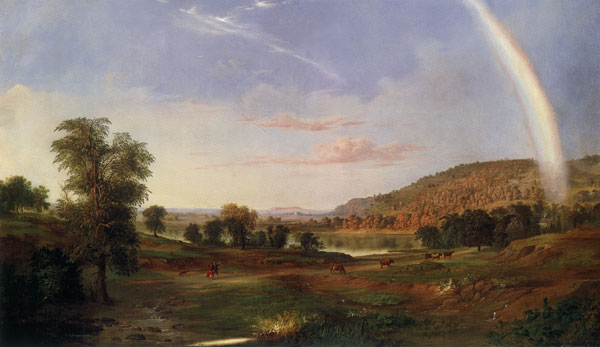
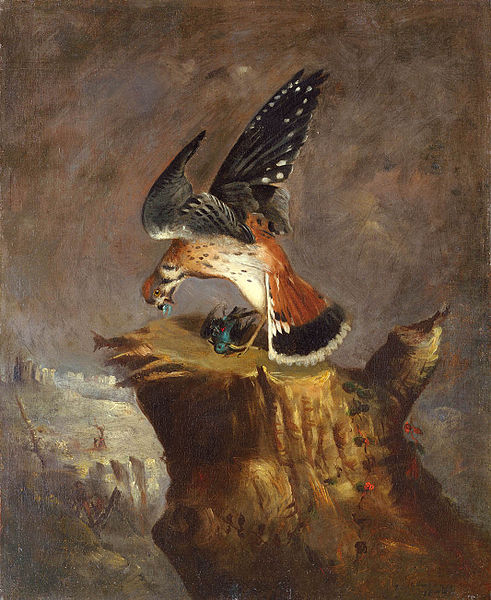
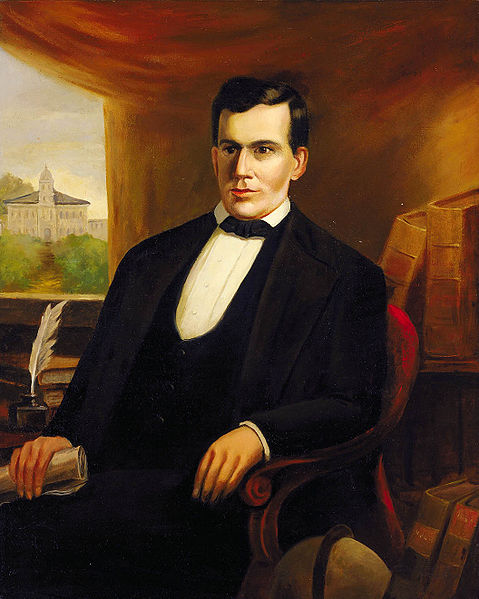
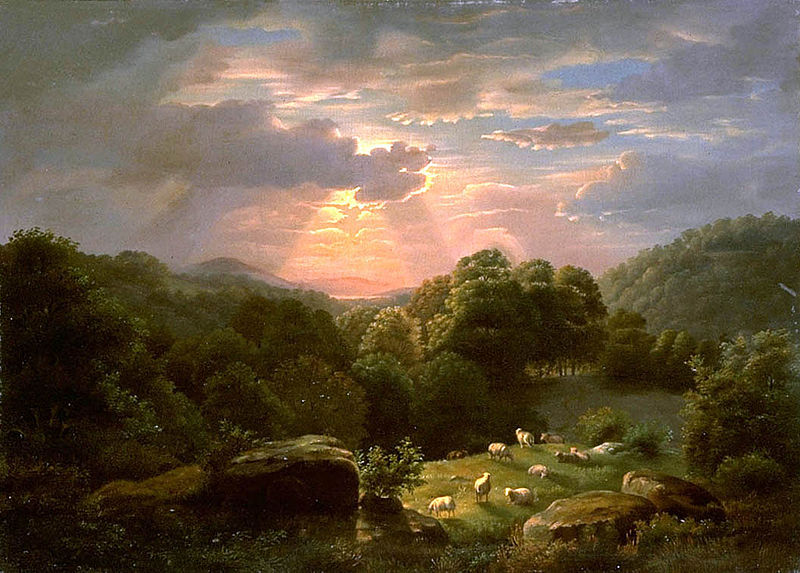
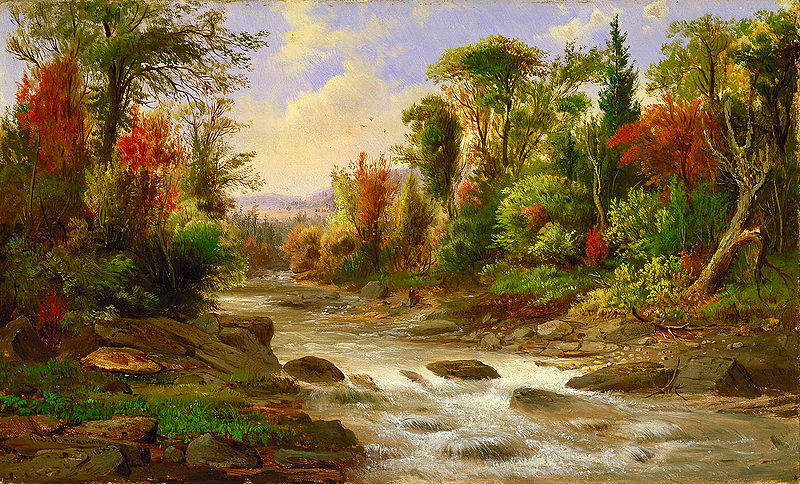
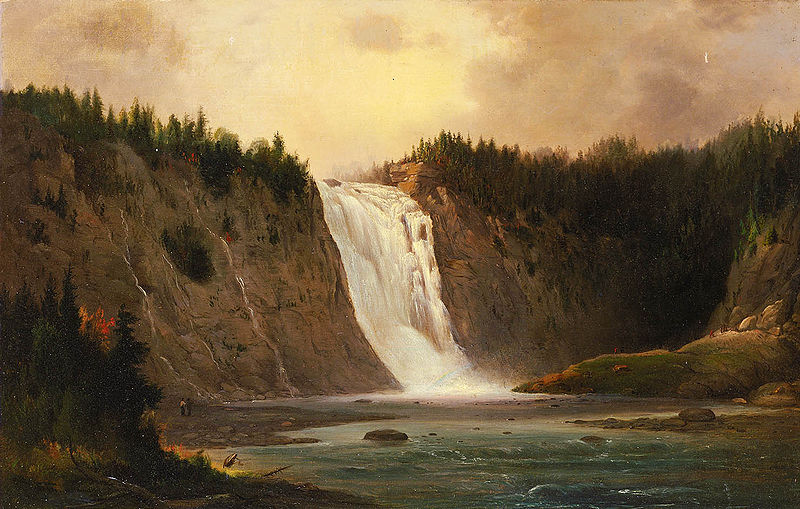
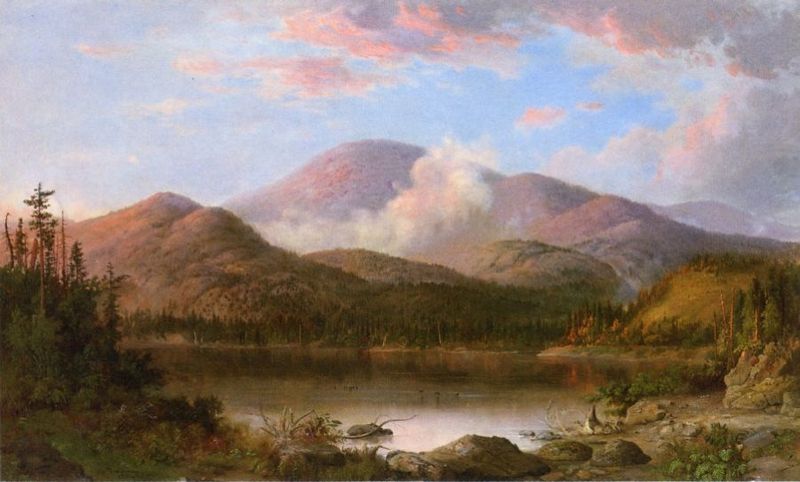
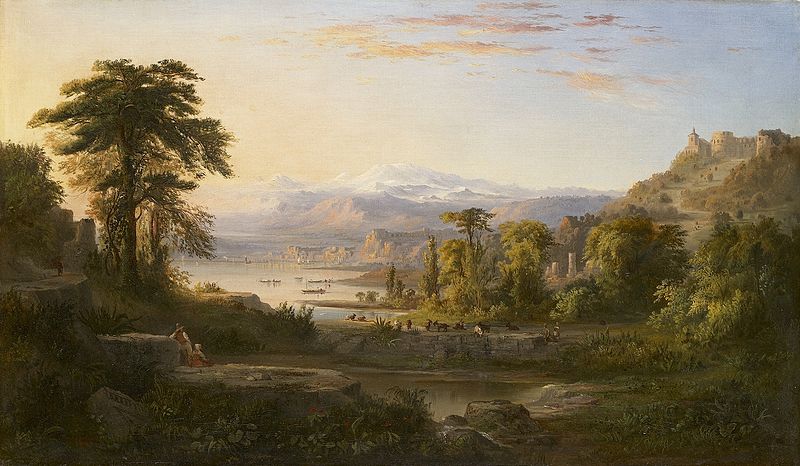
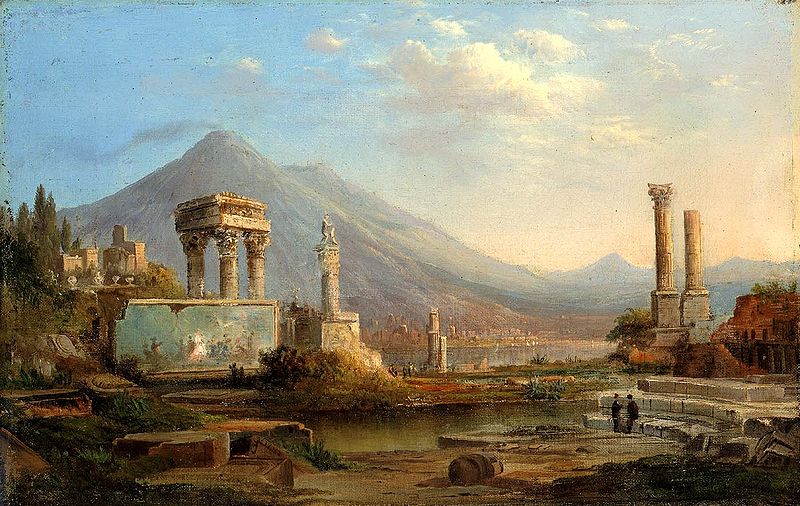
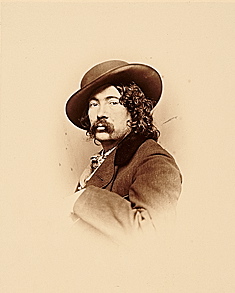
James McDougal Hart (May 10, 1828 – October 24, 1901), was a Scottish born American landscape and cattle painter of the Hudson River School. His older brother, William Hart, was also a Hudson River School artist, and the two painted similar subjects.
Hart was born in Kilmarnock, Scotland, and was taken to America with his family in early youth. In Albany, New York, he trained with a sign and carriage maker — possibly the same employer that had taken on his brother in his early career. Unlike his brother, however, James returned to Europe for serious artistic training. He studied in Munich, and was a pupil of Friedrich Wilhelm Schirmer at the Kunstakademie Düsseldorf. He is associated with the Düsseldorf school of painting.
Hart returned to America in 1853. He exhibited his first work at the National Academy of Design in 1848, became an associate in 1857 and a full member in 1859. James Hart was particularly devoted to the National Academy, exhibiting there over a period of more than forty years, and serving as vice president late in his life from 1895 to 1899. Like his brother, James also exhibited at the Brooklyn Art Association (he lived for a time in Brooklyn) and at major exhibitions around the country.
Along with most of the major landscape artists of the time, Hart based his operations in New York City and adopted the style of the Hudson River School. While James Hart and his brother William often painted similar landscape subjects, James may have been more inclined to paint exceptionally large works. An example is The Old Homestead (1862), 42 x 68 inches, in the collection of the High Museum of Art in Atlanta, Georgia. James may have been exposed to large paintings while studying in Düsseldorf, a center of realist art pedagogy that also shaped the practices of Albert Bierstadt and Worthington Whittredge. William Hart, who did not seek academic European training, seems to have been more comfortable painting small and mid sized works.
Like his brother William, James excelled at painting cattle. Kevin J. Avery writes, "the bovine subjects that once distinguished [his works] now seem the embodiment of Hart's artistic complacency". In contrast with the complacency of some of his cattle scenes, his major landscape paintings are considered important works of the Hudson River School. A particularly fine example is Summer in the Catskills, now in the Thyssen - Bornemisza Museum in Madrid, Spain.
James Hart was survived by two daughters, both figure painters, Letitia Bonnet Hart (1867 - Sept. 1953) and Mary Theresa Hart (1872 – 1942).
